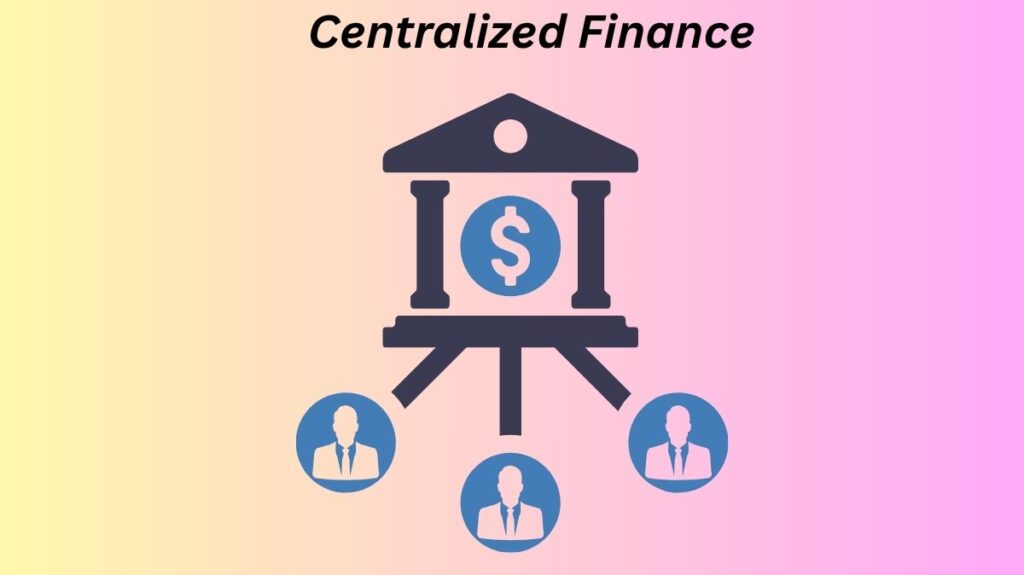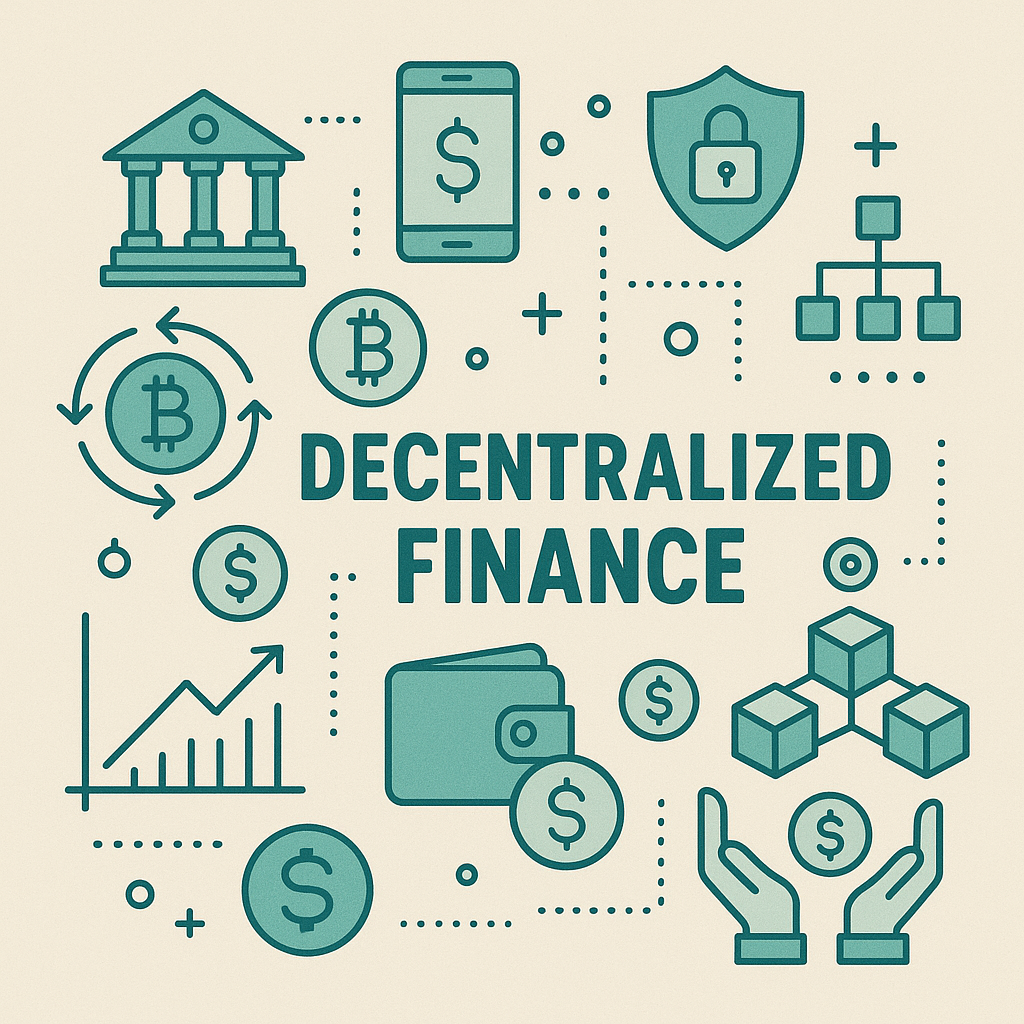CeFi Centralized Finance

The traditional financial services sector, which is centralized, is referred to as “Centralized Finance,” or CeFi. The movement known as Decentralised Finance (DeFi), which seeks to decentralize this established financial services sector, is in stark contrast to it.
Here are a few of CeFi’s salient features and functionalities:
Centralised Control and Infrastructure: All infrastructure in a centrally located system is maintained and controlled by a single organization, typically a business, and is made available to users via a website. Usually, it is easier to design and manage this structure.
Custodial Nature of Funds: CeFis, or centralized exchanges, use custodial wallets to function. Accordingly, the exchange assumes custody of the user’s private keys and manages the funds when a user deposits money. The exchange utilizes the money that the user provides to a specific deposit address to credit the user’s account. Afterward, these money are frequently transferred automatically to either cold or warm storage wallets based on the requirements of the exchange.
One example of a custodial wallet provider is Coinbase, which was established in 2012 and is regarded as one of the biggest and oldest.
Exchange Rate Determination: A price that has been agreed upon by the buyer and seller determines the exchange rate for a market deal on a central exchange. This logic is usually built into the exchange’s backend server.
Regulatory Compliance and KYC: Centralized exchanges have strict KYC regulations. Users must enter their phone number, email address, or official ID during signup. Compliance with financial crime laws including money laundering and terrorism financing requires this. KYC laws are strictly enforced in Singapore.
Potential Disadvantages of Centralization
- Single Point of Failure: Single points of failure are possible in centralized ecosystems.
- Security Risks: They can be hacked in large quantities.
- Monopoly and Higher Fees: Transaction fees may increase as a result of a monopoly created by a centralized system.
- Counterparty Risk: If the exchange is hacked or closes down, users run the danger of losing their money because the exchange is in charge of their assets. In contrast, users maintain custody of their money on decentralised exchanges.
Market Operation
Cryptocurrency is freely exchanged on a number of international markets. The laws of the jurisdictions in which these cryptocurrency exchanges operate impose obligations on them. “Sell orders are also called ask orders, while buy orders are also called bid orders.” Usually, they list both buy and sell orders in a “order book.” A trade happens when the ask and bid prices are equal.
CeFi essentially embodies the conventional, middleman-driven financial services paradigm in the cryptocurrency arena, with a focus on custodial services, centralize
Decentralized Finance

A burgeoning network of financial apps called Decentralised Finance (DeFi) seeks to decentralize the current financial system. It entails using cryptocurrencies to manage financial strategy and carry out actual financial transactions, all while taking advantage of the advantages of the underlying blockchain technology most importantly, without the need for conventional middlemen like banks or the government.
How DeFi Works and Key Concepts
Blockchain systems are usually used to build DeFi applications, and Ethereum is used by many of them. Smart contracts self-executing code stored on the blockchain are widely used by them. They function as automated agreements that can take the place of middlemen in financial transactions.
The DeFi ecosystem’s fundamental ideas and elements include:
- Tokens: These are frequently the “essence” of a DeFi ecosystem and can serve as stand-ins for digital versions of valuable physical items, fiat money, or cryptocurrencies. Digitally representing an asset on a blockchain is known as tokenization.
- Stablecoins: These are blockchain-based assets, frequently linked to a stable asset such as the US dollar, that are intended to reduce price volatility. Services that don’t need financial middlemen are supported by them. DAI is emphasised as a decentralized stablecoin that does not need a centralised source of support because it creates stability by collateralising digital assets. Some are listed, such as TUSD and USDC, however they may need banking links or KYC.
- Wallets: Wallets are necessary for users to interact with DeFi services and store their cryptographic keys, both public and private. MetaMask and Ledger are two examples. Private keys must be handled securely because misplacing them can result in the loss of valuables.
- Oracles: Although blockchain data is on-chain, additional data is frequently required for real-world financial applications. Oracles can supply this, and decentralized oracles have emerged to accommodate blockchain’s decentralized structure. One decentralised oracle network that is mentioned is Chainlink.
- Decentralized Autonomous Organizations (DAOs): These are businesses that are managed independently via smart contracts. They may operate as decentralized investment funds or as other types of organizations. As an illustration, consider Maker DAO, which oversees the Dai stablecoin.
Common DeFi Services and Applications of DeFi
There are several different financial services covered by DeFi applications:
- Decentralized Exchanges (DEXs): Peer-to-peer cryptocurrency trading is made possible by these systems, which do not rely on a central exchange or middleman to manage user funds. Private keys are held by traders. A well-known illustration of a DEX is provided by Uniswap.
- Lending and Borrowing: In order to borrow money or earn interest, users can lend out their cryptocurrency holdings, frequently using other cryptocurrencies as collateral (overcollateralized loans). One significant example of a decentralized lending platform is Compound.
- Savings: Like traditional savings accounts, users can earn a dividend by locking their cryptocurrency assets mostly stablecoins into smart contracts.
- Derivatives: Cryptocurrency is frequently used as collateral for synthetic assets on DeFi platforms, which enable users to trade financial contracts with values created from underlying assets. In this field, Synthetix is considered as a top platform.
- Payments: By eliminating middlemen and cutting costs, blockchain makes money transfers quicker and less expensive. Coins.ph and other cross-border payment systems are known to use Bitcoin as a vehicle currency.
- Flash Loans: A new kind of uncollateralized loan that is exclusive to DeFi and involves borrowing money and repaying it all in a single blockchain transaction. For arbitrage opportunities, developers and traders frequently employ them. One platform that is used as an example for flash loans is Aave.
Benefits of DeFi
Some of DeFi’s main benefits are:
- User Control and Ownership: By avoiding a centralized authority, users have greater control over their finances and possessions.
- Reduced Intermediation: Removes the need for numerous conventional third parties, which lowers the expenses and inconvenience involved.
- Increased Efficiency: Due to the simplification or automation of intricate inter-party communication and settlement procedures by smart contracts, transactions can occur more quickly, often almost instantly.
- Transparency: Usually accessible on the public blockchain, transaction records offer an auditable trail (although privacy varies).
- Accessibility: Lower entry barriers than traditional finance, which could allow the unbanked to have access to financial services.
- Innovation: Makes it feasible for new financial services and products that were hard or impossible to provide using conventional methods.
Challenges of DeFi
Despite the advantages, DeFi has a lot of obstacles to overcome:
- Complexity: It may be challenging for the general public to comprehend the concepts and technologies. One crucial user duty is to safely manage private keys.
- Security Risks: Losses could be substantial if smart contract code is prone to errors and vulnerabilities. In the event that wallets or systems are compromised, users are at danger. Human error is another risk, such as transferring money to the incorrect address.
- Lack of Regulation: Since the ecosystem is still growing, confusion and the possibility of unlawful activity or a lack of consumer protection are caused by unclear regulatory frameworks.
- Scalability: The transaction throughput and speed of the underlying blockchain networks on which many DeFi apps are based are constraints. This is being addressed by investigating solutions such as sharding.
- Privacy: Transaction details may be viewable on public blockchains, therefore they are not always private. For some use cases, privacy-focused cryptocurrencies or private blockchain implementations can be required.
- Underdeveloped Ecosystem: The field is still in its infancy and needs more work to ensure robust infrastructure, adoption, and usability.
- Trust Considerations: The design and implementation of smart contracts, as well as the organisations offering associated services (such as oracles), still require confidence even when traditional middlemen are eliminated.
Even though the field is still developing quickly and is difficult, DeFi, taken as a whole, represents a major move towards granting people greater control over their finances by utilizing the power of decentralized technologies. It has the potential to have a significant effect on the global financial system.
